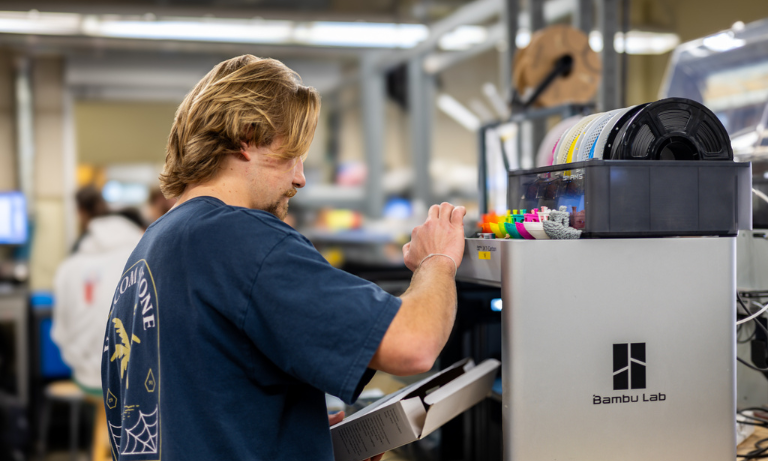By Russ Westphal
After conducting several successful flights of its new Celera 500L prototype aircraft in 2019, Otto Aviation (ottoaviation.com) contacted Donald E. Bently Professor of Mechanical Engineering Professor Russ Westphal to inquire about use of the Boundary Layer Data System (BLDS) in its flight test program. BLDS was of interest because of its unique “stick on and go” paradigm, allowing for rapid and flexible acquisition of local surface flow measurements in flight without impacting single-pilot in-flight workload or connecting to aircraft systems.
During late 2019 and early 2020, the BLDS project team—with participation of the Autonomous Flight Lab (Professor Aaron Drake, director) supported three flight test projects under contract on site at Victorville, CA. Three Cal Poly engineering students—Sean Casteel, Eric Ashley, and Luke Bodkin—participated in these tests by installing the BLDS instrumentation, pre-flight check-out and launch, post-flight data download, and data review. They experienced firsthand the excitement of working on an all-new design and interacting with senior professionals, including pilot Bjarni Tryggvason—a former NASA astronaut.
COVID-related restrictions shelved plans for further 2020 test flights after February 2020, but during 2021 a collaborative relationship was established. This collaboration provided that next-generation BLDS features would be incorporated and flown for the Celera 500L flight test program, thus allowing the new features to be demonstrated in flight. These tests were conducted during June-September 2021.

Celera 500L, Otto Aviation (courtesy Otto Aviation).
The 2019-2021 flight tests on the Otto Aviation Celera 500L demonstrated BLDS capabilities including new features to be incorporated in the next-generation BLDS. Most importantly, the data provided by BLDS allowed the Otto team to evaluate several aspects of the airplane’s unique design. “The BLDS provided us with a practical, flexible approach to measurement of key surface flow features on the Celera 500L in flight”, said Stephen Pearce, Otto Aviation Program Manager. “We expect to continue work with BLDS and the excellent Cal Poly team behind it as we develop our efficient aircraft concepts further” he added.


AFL Director and Aerospace Engineering Professor Aaron Drake


